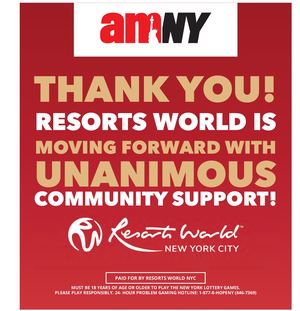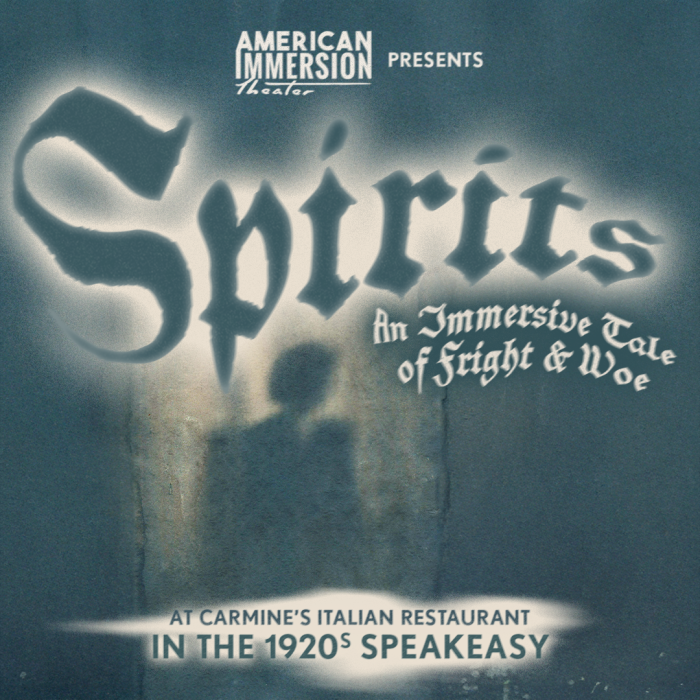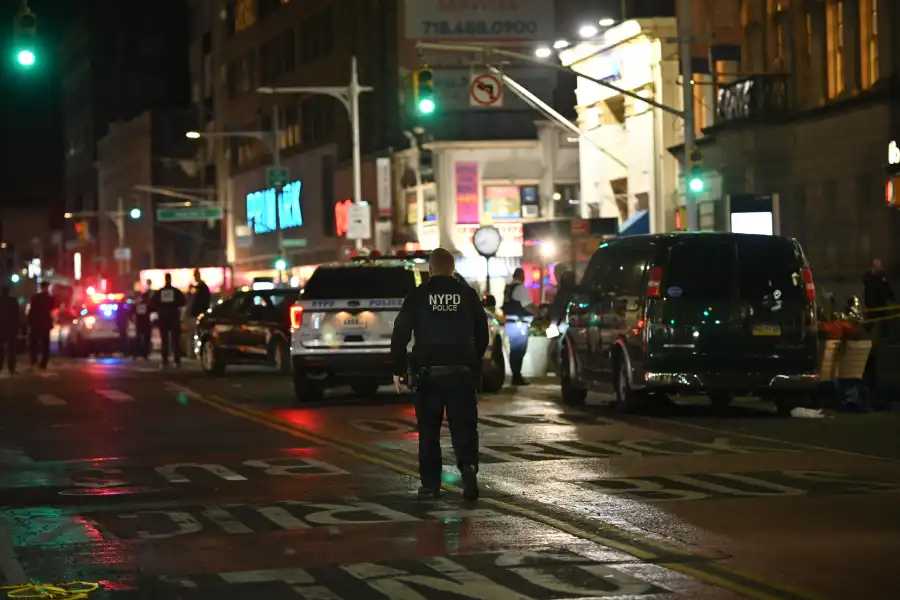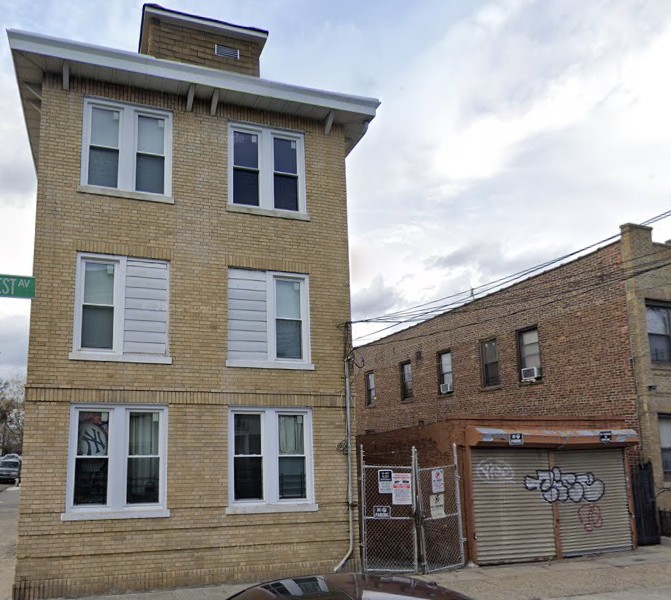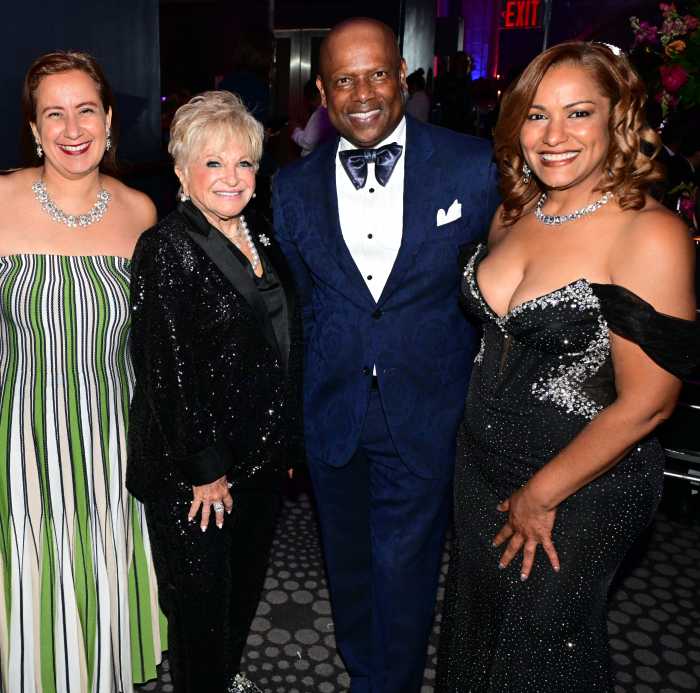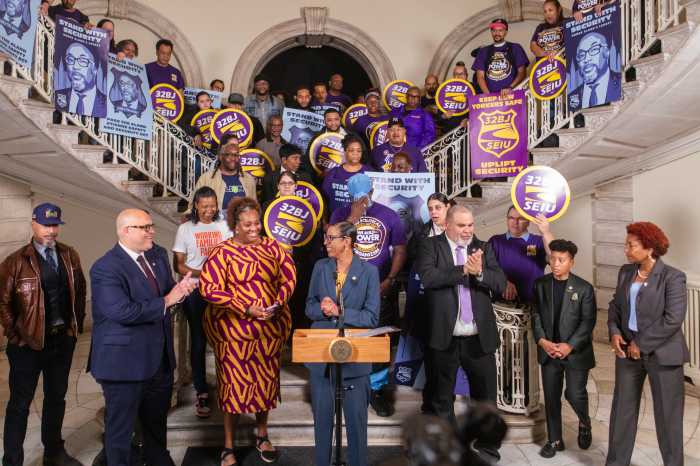Critical St. Vincent’s hearing
To The Editor: Readers of The Villager should know that the Landmarks Preservation Commission’s hearing on the St. Vincent’s/Rudin development proposal has been set for Tues., April 1, starting at 9:30 a.m. at the Borough of Manhattan Community College, 199 Chambers St., near West St., in Theater One. (Bring photo ID to enter.)
This proposal — the largest ever presented to the Landmarks Preservation Commission in its 43-year history — has enormous implications for Greenwich Village and for the nature of landmark protections throughout New York City. I thus urge the public, if at all possible, to reserve the morning of April 1 to come to L.P.C. to testify on this extremely important application.
The hearing will be on St. Vincent’s and Rudin Organization’s proposal to demolish nine buildings in the Greenwich Village Historic District and replace them with a new 330-foot-tall hospital, a 265-foot-tall apartment building, a 12-story apartment building, and two rows of five-story residences.
Testimony will be heard about both the proposed demolitions and the new developments.
The hearing is expected to take hours, so please leave as much time as you can to attend and speak. You will also have the option of dropping off written testimony or sending in testimony if you cannot drop it off.
Please note that L.P.C. has made a special hearing just on this application, rather than having it heard as part of a full day’s schedule of hearings on a range of items, which is their usual procedure. Normally, the exact time that discussion of any item begins might not be known in advance, but this will not be the case with this hearing. The hearing will also be moved from L.P.C.’s usual hearing room to accommodate the larger-than-usual, expected crowds. Their usual hearing room only holds about 50 people.
These are very important changes from L.P.C.’s normal practices that the Greenwich Village Society for Historic Preservation had asked the commission to consider for this critically important hearing. We believe these changes will make it much easier for the public to participate in the hearing and have their input heard and considered. We are very grateful to the commission for considering our input and structuring the hearing in this way.
For more information you can also visit www.gvshp.org/StVincents.htm.
Andrew Berman
Berman is executive director, Greenwich Village Society for Historic Preservation
Hospital’s rocky horror show
To The Editor:
Re “St. Vincent’s: Let’s not do the time warp again!” (talking point, by Brad Hoylman, Feb. 27).
I certainly hope that we do not do the time warp again, because we now know that from the last time St. Vincent’s was granted its wishes by City Planning and the Landmarks Preservation Commission it was and continues to be a disaster for our community. First of all, St. Vincent’s built an ugly new building, the Coleman Pavilion, which no one I know likes or approves of.
Second, St. Vincent’s was granted a zoning waiver to build a larger-than-normally allowable building.
Also, the new facility was to last a millennium, and now St. Vincent’s wants to transfer the additional bulk it was granted to a real estate developer to build a monstrous-sized condominium and a 330-foot-tall hospital facility — the tallest building ever built in the Village. Finally, they promised to make a park out of the triangle and also reneged on that promise.
The point is that St. Vincent’s does not and has not had the community in mind, at all, in making its plans. Therefore, we cannot allow a repeat of the farce that was perpetrated 30 years ago. Furthermore, I reject the notion that there is a conflict: “neighborhood preservation against social good.” Neighborhood preservation equals significant social good. I could just as easily say, “neighborhood preservation against rampant and unceasing overdevelopment”; however, I respect the concerns on both sides of the issue and I believe that if we all act in good faith the Gordian knot can be untied. Rudin and St. Vincent’s must present a responsible proposal for modernizing the hospital’s plant — one that respects the integrity of the Village and at the same time creates a modern hospital facility. This is what the Community Alternative Plan, which St. Vincent’s has rejected out of hand, was intended to be. If St. Vincent’s truly cannot reconcile both objectives, it must look for other solutions, even if it means moving a good part of its physical plant out of the Greenwich Village Historic District. It moved its Cancer Center to Chelsea and there seems to be no valid reason why it can’t do the same for its other departments. Its claim that it is servicing the larger community between the Battery and 59th St. would appear to support the argument for just such a move. Gary A. Tomei
Tomei is president, W. 13th St. Block Association, and a member, Protect the Village Historic District
Healthcare comes first
To The Editor:
I am writing with great hope that the community board, our local elected officials and our community will show true leadership and enthusiastically support St. Vincent’s plans to build a new, state-of-the-art hospital. For more than 150 years, St. Vincent’s has provided residents of Lower Manhattan with quality care in their time of need. St. Vincent’s has been able to support our community, even though the current hospital is a hodgepodge of buildings that inefficiently uses space and lacks the state-of-the-art technology of other world-class institutions. Yes, it is unfortunate that in order to build a modern hospital, St. Vincent’s is forced to unlock the value in its real estate by selling some property to a real estate developer. In the current environment, with the state and city facing budgetary shortfalls, and the state pushing to close or merge approximately 60 hospitals, this is the only way to build the hospital our community needs and deserves. While I understand some of my fellow neighbors’ concern with protecting the makeup of Greenwich Village, the needs of working families who rely on St. Vincent’s when they are at their most vulnerable must come first. People need healthcare and need this new hospital. I call on our community leadership and elected officials to do everything in their power to deliver it to us.
Tessie Sacher
Gerson’s waffling is catching
To The Editor:
Re “What’s blocking Alan Gerson on backing congestion pricing?” (news article, March 12):
I loved Josh Rogers’s piece on Alan Gerson. I mean, I did not like certain parts, but over all I can live with it. If you were to ask me if I thought it was fair, I would say mostly maybe. Nicely done, but not totally satisfying. After reading it, I was left feeling unresolved but 100 percent committed to finding a way to make it manageable. Do you know what I mean? I really wanted to make up my mind but this article did not help me one bit. Lawrence White
Gerson steering right course
To The Editor:
Re “What’s blocking Alan Gerson on backing congestion pricing?” (news article, March 12):
About your question regarding Alan Gerson being the only Manhattan councilman with the seeming temerity to oppose congestion pricing: I have seen Mr. Gerson in several community meetings on congestion pricing, and Alan is now voting on congestion pricing the way Downtowners want him to. Questions about serious flaws in congestion pricing have been raised in these community meetings and these questions have not been answered satisfactorily by the Department of Transportation and PlaNYC representatives. As it stands now, all vehicles using tolled bridges and tunnels, such as the Holland Tunnel, would not be discouraged at all by congestion pricing because of the automatic deduction it offers. Therefore, there would be no decrease in traffic on Canal St. Logically, parking-permit abuse needs to be eliminated before implementing any congestion pricing to ensure that 140,000-plus government-sector vehicles with permits are not exempt from this tax. And how about D.O.T. enforcement of Downtown no-permit areas and $300 million lost from parking meter revenue due to parking-permit abuse? Councilman Gerson is doing the right thing because he has not heard real answers regarding these issues as they relate to congestion pricing. Congestion pricing is far from ready for New York City. Geoff Lee
Show me the bike racks
To The Editor:
Re “The state of the city’s streets: A year to remember?” (Progress Report article, by Graham T. Beck, March 5):
A total of 130,000 daily commuting bikers — is this a false statement? Maybe if you count bicycles, tricycles and training wheels, it’s possibly half that amount. Where do 130,000 bikers park their bikes? There should be a bike on every meter, lamppost, tree, gate — and if they are, they are parking illegally. I think this city has installed hundreds of miles of bike lanes and not one — to my knowledge — bike rack. Talk about doing things backwards. In Europe on streets designated for bike parking you see 200 to 300 bikes. Ron Latigano
Trust not inspiring trust
To The Editor:
Re “Taylor: We can’t start again” (letter, by Diana Taylor, Feb. 20):
There are items that need to be addressed in Trust Chairperson Diana Taylor’s letter to the editor.
Ms. Taylor wrote: “Any reuse of Pier 40 must fund restoring the pier to sound physical condition, while generating enough revenue to pay for approximately 40 percent of the entire park’s annual maintenance budget.” Why is Pier 40 being required to bear the enormous financial burden of carrying its own infrastructure costs? Where has this been written or documented, and when did the Hudson River Park Trust board vote to implement this policy? This policy would be deviating from the norm, since other segments of Hudson River Park have received public money for construction or reconstruction.
Additionally, what percentage revenue is expected from each of the “development nodes” in the park, of which Pier 40 is one?
Chairperson Taylor’s announcement of this 40 percent was a surprise to many of us in the community who have been involved with Pier 40 for years. How did this 40 percent number come about, when was it decided and by whom? Currently, having no public money for Pier 40 should not automatically mean private developers must take over, especially when the proposals feature design plans and uses that are completely unacceptable to the people of the community, such as Related’s “Vegas on the Hudson” and CampGroup’s “pay for play” plans. In another matter, with regard to the efforts of the L.G.B.T. group FIERCE! to have a community center on Pier 40 (“Gay youth back Pier 40 plan offering 24-hr. center,” news article, Feb. 20), Trust spokesperson Chris Martin asserts: “Whether the drop-in center would be part of any one of the development plans will be up to the individual developer or developers.” Whether Pier 40 is a good location for an L.G.B.T. community center may not be the issue for this discussion right now.
However, since when do private developers decide on public policy and community issues and needs?
The Hudson River Park Trust is accountable to the people of Greenwich Village, Lower Manhattan and the people of New York, not private developers, and decisions such as this one should not be made by developers but by the people designated to protect and promote the public interest. Marc Ameruso
Ameruso is chairperson, Hudson River Park Trust Advisory Council, and member, Community Board 1
E-mail letters, not longer than 250 words in length, to news@thevillager.com or fax to 212-229-2790 or mail to The Villager, Letters to the Editor, 145 Sixth Ave., ground floor, NY, NY 10013. Please include phone number for confirmation purposes. The Villager reserves the right to edit letters for space, grammar, clarity and libel.
